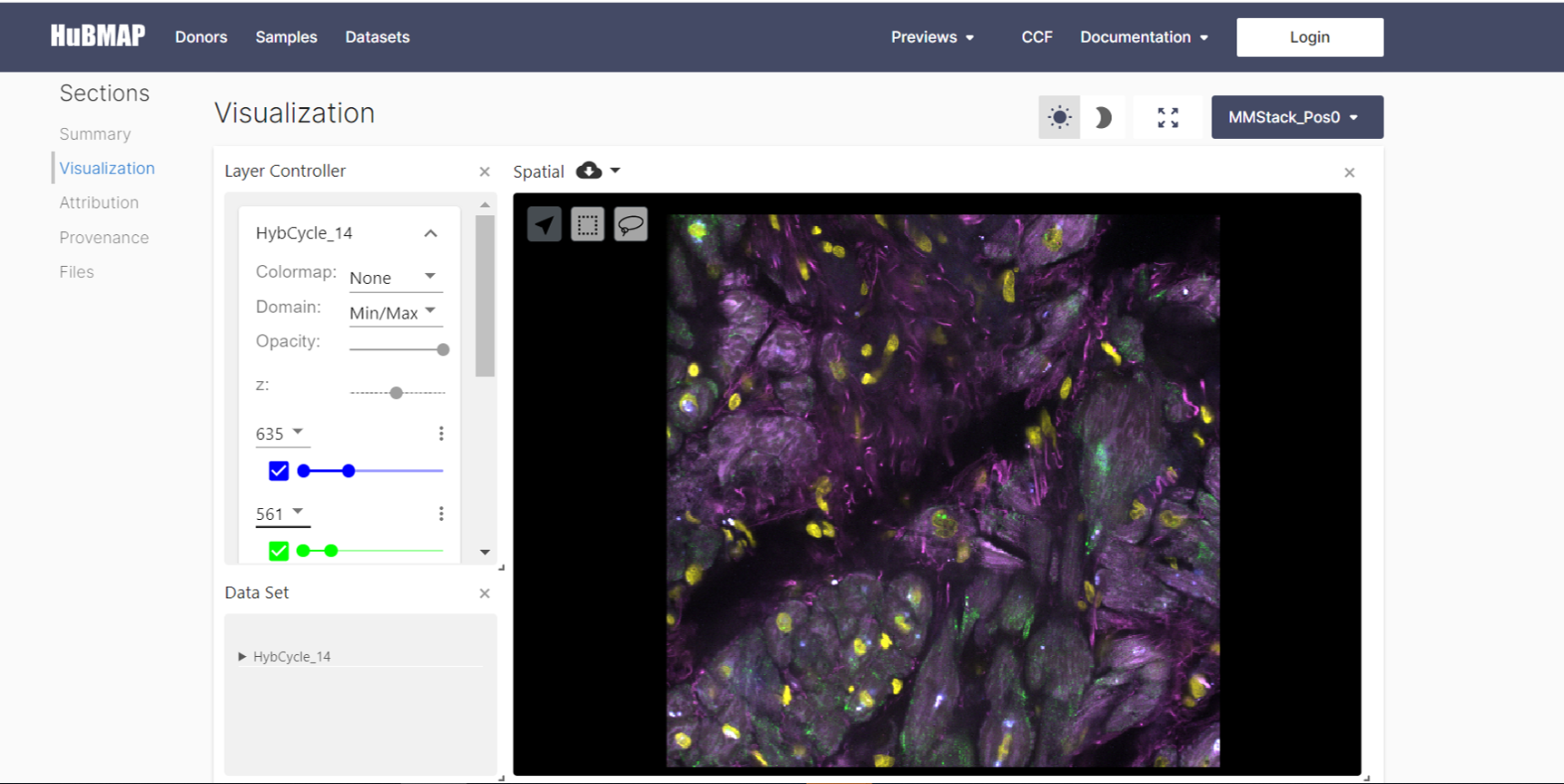
An adult human body is made up of trillions of cells. How those cells interact with each other and arrange into tissues and organs directly impacts our health. A new Common Fund program – The Human BioMolecular Atlas Program (HuBMAP) – is creating cutting edge tools to collect molecular and imaging data, enabling the generation of 3D tissue maps, as well as the construction of an atlas which will display the relationships among cells in the human body. Together, the maps and atlas could lead researchers to a better understanding of how the relationships among our cells influence health.
HuBMAP researchers form 18 different collaborative research teams across the United States and Europe and work closely with other researchers around the world. They recently issued an initial data release, which includes data at the level of individual cells from microscopy, mass spectrometry, and sequencing assays from seven organ types – heart, kidney, large and small intestines, lymph nodes, spleen, thymus. These datasets could be used by researchers in cell and tissue anatomy, pharmaceutical companies developing therapies, or even parents showing their children how amazing the human body is.
The tools and maps generated by HuBMAP researchers are openly available and can be found at https://portal.hubmapconsortium.org. The current release is just the beginning. HuBMAP aims to continually release new datasets to serve as a foundation for future applications of anatomical data to diagnose, study, and treat disease.


